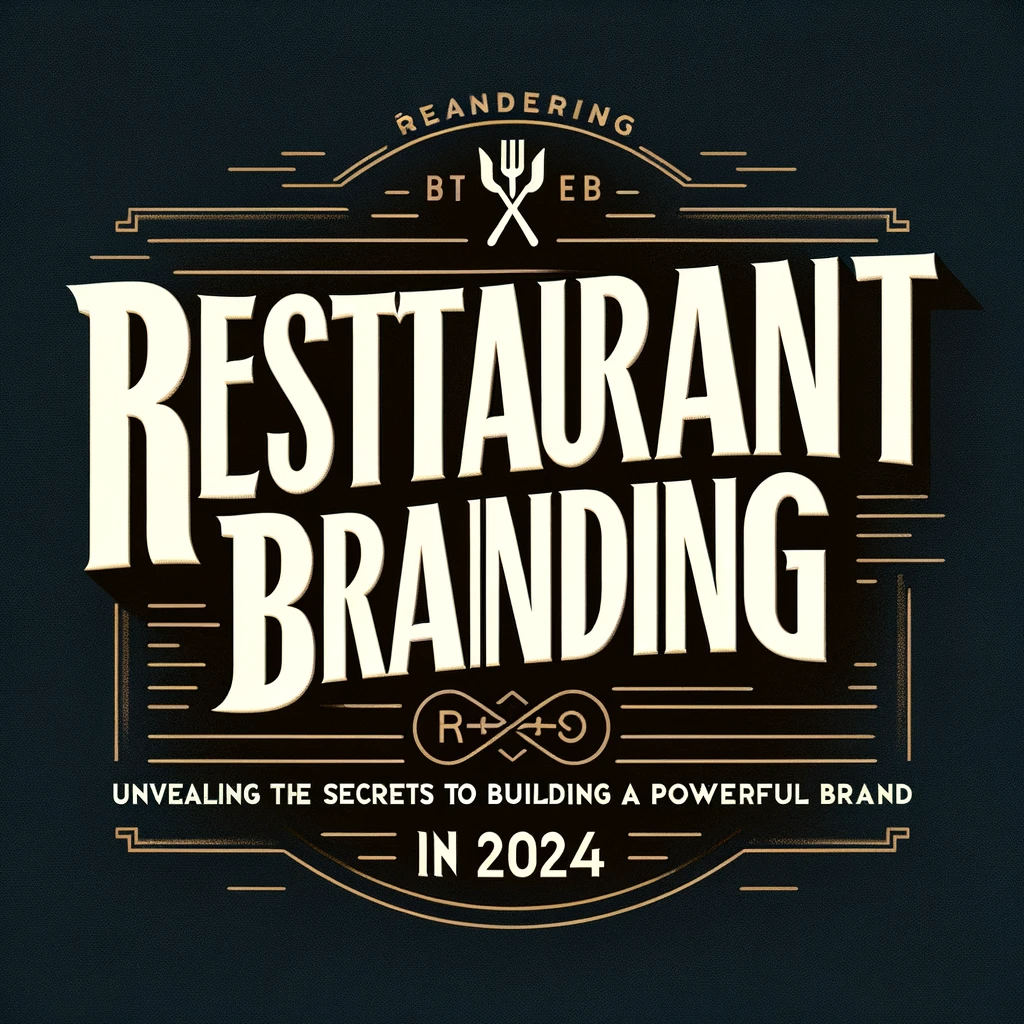Introduction
For the first time in modern history, the hospitality workforce spans five distinct generations—from Traditionalists and Baby Boomers to Generation X, Millennials, and Generation Z. This unprecedented generational diversity creates both remarkable opportunities and significant challenges for hospitality leaders. Each generation brings different values, communication preferences, work styles, and expectations to the workplace, creating potential for both enriched service innovation and increased team friction.
The stakes are particularly high in hospitality, where staff cohesion directly impacts guest experience and where labor challenges have reached crisis levels in many markets. Properties that successfully harness the strengths of a multi-generational workforce gain competitive advantage through enhanced creativity, improved guest connections across demographics, and greater operational resilience. Conversely, those that fail to effectively bridge generational differences often experience higher turnover, internal conflict, and inconsistent service delivery.
This comprehensive guide explores practical strategies for hospitality managers to build high-performing teams across generational boundaries. We’ll examine the distinct characteristics of each generation currently in the workforce, discuss common friction points and how to address them, explore leadership approaches that resonate across generational divides, and provide frameworks for creating an inclusive culture that values diverse perspectives. Throughout, we’ll share insights from hospitality organizations that have successfully transformed generational diversity from a challenge into a competitive strength.
Understanding Generational Differences in the Hospitality Context
Before developing management strategies, it’s essential to understand the characteristics and motivations of each generation:
The Five Generations in Today’s Workforce
Each generation has been shaped by different historical events and cultural influences:
Traditionalists (Born before 1946):
While representing a small percentage of the active workforce, Traditionalists still contribute significantly in certain hospitality roles, particularly in luxury properties where their extensive experience and traditional service values are highly valued. This generation typically demonstrates strong work ethic, respect for authority, and appreciation for formal recognition.
“Our Traditionalist team members bring an irreplaceable depth of service knowledge and guest relationship skills,” notes a General Manager at a luxury New York hotel. “They often serve as our standard-bearers for service excellence and mentors for younger staff.”
Baby Boomers (Born 1946-1964):
Boomers occupy many senior leadership and specialized roles in hospitality, bringing extensive industry knowledge and strong work dedication. They typically value job security, professional accomplishment, and in-person communication. Many are delaying retirement, creating both opportunities for knowledge transfer and challenges in advancement paths for younger generations.
Generation X (Born 1965-1980):
Gen X employees often hold middle and senior management positions in hospitality organizations. They tend to be self-reliant, adaptable, and pragmatic problem-solvers who value work-life balance. This generation frequently serves as a bridge between older and younger colleagues, translating between different communication styles and work approaches.
Millennials (Born 1981-1996):
Now the largest generation in the workforce, Millennials occupy roles across all levels of hospitality organizations. They typically seek purpose-driven work, regular feedback, career development opportunities, and technology integration. This generation often brings strong collaborative skills and comfort with diversity, along with expectations for workplace flexibility.
Generation Z (Born 1997-2012):
The newest entrants to the hospitality workforce, Gen Z employees bring digital nativity, entrepreneurial thinking, and strong values around authenticity and social responsibility. They often seek financial security, mental health support, and clear boundaries between work and personal life. This generation typically expects technology-enabled processes and diverse, inclusive workplaces.
“Understanding these generational characteristics isn’t about stereotyping individuals but recognizing patterns that influence workplace expectations and communication preferences,” explains an organizational psychologist specializing in hospitality workplaces. “The most effective managers recognize these patterns while still treating team members as individuals with unique needs and strengths.”
Common Friction Points in Multi-Generational Teams
Several areas frequently create tension in age-diverse hospitality teams:
Communication Style Differences:
Generational preferences for communication channels and styles often create friction. Older generations typically prefer face-to-face or voice conversations with more formal language, while younger team members often default to text-based, abbreviated communication through digital channels.
Technology Adoption Gaps:
Varying comfort levels with technology can create operational challenges and interpersonal tension. Younger staff may grow frustrated with what they perceive as resistance to efficiency-enhancing technology, while older team members may feel their experience is devalued when new systems replace familiar processes.
Work-Life Balance Expectations:
Different generations often have divergent views on work hours, scheduling flexibility, and appropriate boundaries. Baby Boomers may interpret younger generations’ desire for flexibility as lack of commitment, while Millennials and Gen Z might view older colleagues’ long hours as inefficient or reflecting poor boundaries.
Recognition and Feedback Preferences:
Younger generations typically expect frequent, informal feedback and recognition, while older generations often prefer more formal, scheduled performance discussions. These differences can lead to younger staff feeling unsupported while managers believe they’re providing adequate guidance.
Authority and Hierarchy Perspectives:
Traditionalists and Boomers often respect hierarchical structures and expect deference to experience, while younger generations typically prefer flatter organizations where ideas are evaluated on merit regardless of tenure. These differences can create tension around decision-making processes and innovation initiatives.
A major hotel company addressed these friction points by creating cross-generational “Quality Teams” that collaborate on service improvement initiatives. “We deliberately mix generations on these teams to combine the service tradition knowledge of our veteran staff with the fresh perspectives and technological fluency of younger team members,” explains a former Vice President of their Leadership Center. “The initial friction typically evolves into mutual respect as team members recognize the value each generation brings to solving service challenges.”
Generational Strengths in Hospitality Contexts
Each generation brings valuable strengths to hospitality operations:
Traditionalists and Baby Boomers:
- Deep understanding of traditional service standards and protocols
- Extensive product knowledge and industry relationships
- Strong work ethic and reliability
- Well-developed interpersonal skills for high-touch guest interactions
- Valuable connections with older guest demographics
Generation X:
- Adaptability to both traditional and modern service approaches
- Strong problem-solving abilities with minimal supervision
- Effective bridging between different communication styles
- Practical approach to implementing changes
- Balance between technological adoption and high-touch service
Millennials and Generation Z:
- Natural facility with technology and digital guest touchpoints
- Comfort with rapid change and evolving service models
- Strong collaboration and team-oriented work styles
- Multicultural fluency and inclusive mindsets
- Fresh perspectives on service innovation and guest experience
A leading luxury hotel group has developed a “Strengths Mapping” process that explicitly identifies the generational advantages within each department. “Rather than focusing on differences as problems, we map the specific strengths each generation brings to our operation,” notes their President and CEO. “This approach has transformed our perspective from managing generational ‘gaps’ to leveraging generational ‘assets’ that collectively enhance our service delivery.”
Leadership Strategies for Multi-Generational Teams
Effective leadership across generations requires thoughtful approaches:
Adaptive Communication Frameworks
Successful multi-generational leadership begins with communication:
Channel Flexibility:
Effective leaders develop fluency across multiple communication channels, recognizing when face-to-face conversations, phone calls, emails, or messaging platforms are most appropriate for different team members and situations. This flexibility demonstrates respect for diverse preferences while ensuring clear information flow.
Translation Between Styles:
Skilled managers often serve as “translators” between different generational communication styles, helping team members understand intentions that might be obscured by stylistic differences. This translation prevents misinterpretations that can damage team relationships.
Communication Expectations Setting:
Rather than assuming shared understanding, successful leaders explicitly establish communication protocols—which channels to use for different types of information, expected response timeframes, and appropriate formality levels. These clear expectations prevent friction caused by unspoken assumptions.
Generational Code-Switching:
The most effective leaders develop the ability to “code-switch” between communication styles based on their audience—adjusting formality, directness, and medium to match recipient preferences while maintaining authenticity and consistency in core messages.
A major hotel corporation implemented a “Communication Preference Profile” as part of their onboarding process. “We ask all team members to indicate their preferred communication channels for different types of information,” explains their President and CEO. “This simple tool has reduced miscommunication by 34% according to our internal metrics, while demonstrating respect for individual preferences regardless of generation.”
Inclusive Decision-Making Approaches
Balancing diverse perspectives in decision processes is essential:
Multi-Level Input Structures:
Effective leaders create structured opportunities for input from all organizational levels, ensuring that both experienced perspectives and fresh viewpoints inform decisions. These structures might include cross-generational task forces, representative feedback panels, or systematic idea submission processes.
Transparent Rationale Communication:
When making decisions that might conflict with some generational preferences, successful leaders clearly communicate the reasoning behind choices, acknowledging different viewpoints while explaining the factors that influenced the final decision. This transparency builds trust across generational lines.
Decision Authority Clarity:
Effective managers establish clear understanding of which decisions are collaborative versus directive, preventing frustration when input is sought but not ultimately followed. This clarity is particularly important for younger generations who may expect greater decision participation.
Balanced Innovation Approach:
Successful leaders create frameworks that balance respect for established practices with openness to innovation, explicitly valuing both experience-based wisdom and fresh perspectives. This balance prevents either resistance to necessary change or dismissal of valuable traditions.
A large international hotel company’s “Innovation Lab” program exemplifies effective multi-generational decision-making. “We deliberately structure our innovation teams with representatives from all generations,” notes their President. “Each new service concept must address the question: ‘How does this honor our heritage while moving us forward?’ This framing respects experience while creating space for fresh thinking.”
Flexible Recognition and Feedback Systems
Adapting recognition to generational preferences drives engagement:
Feedback Frequency Variation:
Effective leaders adapt feedback frequency to individual preferences rather than applying one-size-fits-all approaches. While maintaining consistent performance standards, they provide more frequent, informal feedback for team members who value regular input while respecting others’ preference for more scheduled discussions.
Multi-Channel Recognition:
Successful recognition programs offer options that resonate across generations—public acknowledgment for those who value visibility, private appreciation for those who prefer discretion, tangible rewards for some, and experience-based recognition for others. This variety ensures meaningful recognition for all team members.
Bidirectional Mentoring Programs:
Innovative organizations establish formal programs where knowledge flows in multiple directions—traditional mentoring from experienced to newer staff alongside reverse mentoring where younger team members share technological insights or fresh perspectives with senior colleagues.
Achievement Documentation Systems:
Effective leaders implement systems for documenting both major and minor achievements throughout the year, ensuring that all contributions are remembered during formal review processes regardless of when they occurred. This documentation is particularly important for younger generations seeking regular acknowledgment.
A global hotel brand’s “Catch Me at My Best” program exemplifies effective multi-generational recognition. “The program allows anyone—guests, peers, or managers—to recognize staff contributions through multiple channels including physical cards, our mobile app, or verbal acknowledgment,” explains their President and CEO. “This flexibility ensures that recognition matches both the giver’s and receiver’s preferences, resonating across generational boundaries.”
Career Development Across Life Stages
Effective development approaches recognize different career stages:
Individualized Career Pathing:
Successful organizations create flexible career development frameworks that accommodate different life stage needs and goals—accelerated advancement for early-career staff, lateral moves for those seeking new challenges without additional management responsibility, and meaningful late-career contributions that leverage deep expertise.
Skills-Based Advancement Structures:
Progressive hospitality organizations are shifting from purely tenure-based advancement to skills-based progression that allows talented team members to advance based on capabilities rather than years of service. This approach addresses younger generations’ desire for meritocracy while still valuing experience.
Life Stage-Appropriate Benefits:
Effective retention strategies include benefits packages with options relevant to different life stages—student loan assistance for younger staff, family support for mid-career team members, and phased retirement or consulting opportunities for experienced employees considering transitions.
Continuous Learning Culture:
Successful leaders foster environments where learning is ongoing and accessible to all generations through diverse methods—formal training, peer coaching, online modules, and experiential development opportunities. This culture supports skill relevance across changing industry demands.
A prominent hospitality group implemented a “Career Lattice” model replacing traditional linear career paths. “Our lattice allows team members to move laterally, diagonally, or vertically based on their skills, interests, and life stage needs,” explains their Chief Human Resources Officer. “This flexibility has dramatically improved retention across all generations by providing meaningful development opportunities beyond just climbing the management ladder.”
Building an Inclusive Multi-Generational Culture
Creating a truly integrated workplace requires deliberate culture building:
Fostering Mutual Respect and Understanding
Activities promoting empathy across generations are key:
Cross-Generational Teambuilding: Design activities that require collaboration across age groups, focusing on shared goals that leverage diverse skills and perspectives.
Generational Awareness Training: Implement workshops that educate team members about different generational characteristics and communication styles, focusing on building understanding rather than reinforcing stereotypes.
Shared Storytelling Platforms: Create opportunities for team members from different generations to share their experiences, career journeys, and perspectives, fostering empathy and connection.
Leveraging Generational Strengths Collaboratively
Structure work to maximize combined advantages:
Mixed-Generation Project Teams: Intentionally assemble teams with diverse generational representation for key initiatives, ensuring a blend of experience, innovation, and technological fluency.
Knowledge Sharing Structures: Establish formal and informal mechanisms for transferring knowledge across generations—from traditional mentoring to reverse mentoring and peer coaching arrangements.
Role Design Based on Strengths: Where possible, design roles and assign tasks that align with typical generational strengths while providing opportunities for cross-generational skill development.
Establishing Shared Values and Purpose
Unifying principles transcend generational differences:
Clearly Articulated Core Values: Define and consistently reinforce organizational values that resonate across generations, focusing on universal principles like respect, integrity, service excellence, and teamwork.
Purpose-Driven Mission: Connect daily work to a larger organizational purpose that provides meaning for all team members, regardless of age or role.
Inclusive Language and Imagery: Ensure all internal and external communications use language and visuals that reflect and respect the diversity of the workforce, avoiding age-related stereotypes or biases.
A hospitality leadership expert advises: “The most effective multi-generational cultures are built on a foundation of shared purpose and mutual respect. When team members feel united by common goals and genuinely value the contributions of colleagues from different backgrounds and age groups, generational differences become sources of strength rather than friction.”
Case Study: Boutique Hotel Group’s Generational Integration Initiative
Examining a specific implementation provides practical insights:
Challenge:
A growing boutique hotel group with properties appealing to diverse guest demographics experienced increasing friction between its long-serving Baby Boomer managers and newly hired Millennial and Gen Z frontline staff. Issues included communication breakdowns, conflicts over technology adoption, and rising turnover among younger employees citing lack of development opportunities.
Approach:
- Implemented mandatory “Bridging Generations” workshops for all managers and staff focused on understanding communication styles and building empathy.
- Established a formal bidirectional mentoring program pairing senior leaders with junior staff for mutual learning.
- Revised the performance feedback process to include options for more frequent, informal check-ins alongside traditional annual reviews.
- Created cross-generational “Service Innovation Teams” at each property tasked with developing new guest experiences leveraging diverse perspectives.
- Launched a skills-based career development platform allowing advancement based on demonstrated capabilities rather than solely on tenure.
- Updated internal communication platforms to include channels preferred by younger generations while maintaining traditional methods for those who preferred them.
Results (within 1 year):
- Reduced employee turnover among staff under 30 by 28%.
- Increased employee engagement scores related to communication and teamwork by 15 percentage points.
- Generated 12 new guest service initiatives directly from the cross-generational innovation teams, leading to a 5% increase in guest satisfaction scores.
- Improved adoption rates for new technologies by 40% through better training and peer support facilitated by the mentoring program.
- Received industry recognition for innovative workplace culture.
The group’s CEO commented: “Addressing our generational dynamics wasn’t just about reducing conflict; it was about unlocking the combined potential of our diverse workforce. By creating structures that foster mutual respect and leverage the unique strengths of each generation, we’ve built stronger teams, enhanced our service innovation, and created a more resilient organization prepared for future challenges.”
Conclusion: Harnessing Generational Diversity as a Competitive Advantage
Managing a multi-generational workforce presents unique challenges but offers profound opportunities for hospitality organizations willing to invest in inclusive leadership and thoughtful strategies. Rather than viewing generational differences as obstacles, successful properties recognize them as sources of diverse perspectives, skills, and experiences that can enrich service delivery, enhance innovation, and build stronger connections with guests across all demographics.
The key strategies involve:
- Understanding and Appreciating Differences: Moving beyond stereotypes to genuinely understand the values, preferences, and strengths each generation brings.
- Adaptive Leadership: Employing flexible communication, recognition, and development approaches that resonate across generational boundaries.
- Building Bridges: Creating structures and processes that foster collaboration, knowledge sharing, and mutual respect between age groups.
- Fostering an Inclusive Culture: Establishing shared values and purpose that unite team members while celebrating diverse contributions.
- Leveraging Combined Strengths: Intentionally structuring teams and initiatives to harness the complementary advantages of multi-generational collaboration.
In an industry defined by human connection and facing significant labor market pressures, the ability to effectively manage and motivate a diverse, multi-generational workforce is no longer a niche skill—it’s a critical leadership competency. By embracing the strategies outlined in this guide, hospitality leaders can transform generational diversity from a potential source of friction into a powerful engine for service excellence, innovation, and sustainable competitive advantage.

















